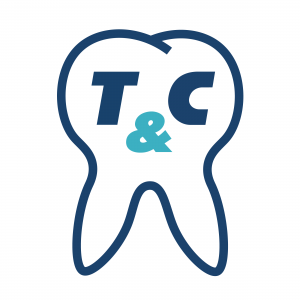Potentially one of the most sneakiest ailments in the United States, having a cavity is still one the of the most common chronic diseases in children. Getting a cavity during childhood can result in trips to the dentist, missing school, and tooth pain1. The most common tooth to first get a cavity is on the child’s first molars, which typically erupts around age six2. Sometimes, these first molars will have deep valleys, grooves, or fissures on the chewing surface which can harbor destructive bacteria that are hard to reach with a regular toothbrush. Luckily, dentists have dental sealants in their armamentarium to lightly coat the chewing surfaces to protect those deep grooves.
Understanding that cavities are preventable with sealants, especially in the back teeth is a good first step for parents with children. In a recent study, researchers questioned over 3500 adults and only 55% of parents were aware of the benefits of dental sealants3.
Kids heading off to school are no longer under the watchful eye of their parents when it comes to eating and drinking. Oftentimes sweetened drinks, including milk, and other sugary foods are consumed at school. Diets containing these foods and drinks are associated with higher cavity rates4.
To get a sealant placed, all the dentist has to do is make sure that the fissures and grooves of the chewing surfaces are clean and dry, apply the sealing material and let it set completely. The procedure is pain-free for children, quick, and convenient for everyone. After the sealants are placed, they are hard and the child can eat right after the appointment with no problems.
When sealants are placed on the chewing surfaces, they have been proven to reduce the risk of cavities by 80% for two years and 50% for four years5. Hopefully enough protection to get kids through the important years of learning how to brush properly
Be sure to ask the dentist about whether or not your child needs sealants, because they can delay future treatment for cavities on the back teeth, permanent or baby6,7.
Dentists should be informing parents about the potential benefits of sealants8. But parents should also understand that just because a child has sealants, they are not replacements whatsoever for proper brushing and flossing which is the best way to prevent cavities9.
- Children’s Oral Health. (2020, December 10). Retrieved January 19, 2021, from https://www.cdc.gov/oralhealth/basics/childrens-oral-health/index.html
- Ahovuo-Saloranta A, Hiiri A, Nordblad A, Mäkelä M, Worthington HV. Pit and fissure sealants for preventing dental decay in the per- manent teeth of children and adolescents. (CD001830.). Cochrane Database Syst Rev. 2008.
- Junger, M. L., Griffin, S. O., Lesaja, S., & Espinoza, L. (2019). Awareness Among US Adults of Dental Sealants for Caries Prevention. Preventing chronic disease, 16, E29. https://doi.org/10.5888/pcd16.180398
- Kaewkamnerdpong, I., & Krisdapong, S. (2018). The Associations of School Oral Health-Related Environments with Oral Health Behaviours and Dental Caries in Children. Caries research, 52(1-2), 166–175. https://doi.org/10.1159/000485747
- Dental Sealant FAQs. (2020, October 30). Retrieved January 19, 2021, from https://www.cdc.gov/oralhealth/dental_sealant_program/sealants-FAQ.htm
- Okunseri, C. E., Hodgson, B., Okunseri, E., Garcia, R., Visotcky, A., & Szabo, A. (2020). Dental sealants and restorative treatment for first molars among Medicaid enrollees. Community dentistry and oral epidemiology, 48(6), 487–492. https://doi.org/10.1111/cdoe.12560
- Wright, J. T., Crall, J. J., Fontana, M., Gillette, E. J., Nový, B. B., Dhar, V., Donly, K., Hewlett, E. R., Quinonez, R. B., Chaffin, J., Crespin, M., Iafolla, T., Siegal, M. D., Tampi, M. P., Graham, L., Estrich, C., & Carrasco-Labra, A. (2016). Evidence-based clinical practice guideline for the use of pit-and-fissure sealants: A report of the American Dental Association and the American Academy of Pediatric Dentistry. Journal of the American Dental Association (1939), 147(8), 672–682.e12. https://doi.org/10.1016/j.adaj.2016.06.001
- Oong, E. M., Griffin, S. O., Kohn, W. G., Gooch, B. F., & Caufield, P. W. (2008). The effect of dental sealants on bacteria levels in caries lesions: a review of the evidence. Journal of the American Dental Association (1939), 139(3), 271–358. https://doi.org/10.14219/jada.archive.2008.0156
- Sealants. (n.d.). Retrieved January 20, 2021, from https://www.mouthhealthy.org/en/az-topics/s/sealants
The Author of this post does not assume any liability for any injury and/or damage to persons or property as a matter of products liability, malpractice, negligence, or otherwise, or from any use or operation of any methods, instructions or ideas contained. The foregoing parties will not be liable for any direct, special, indirect, incidental, consequential, or punitive damages as a result of the reader’s use of this information.
